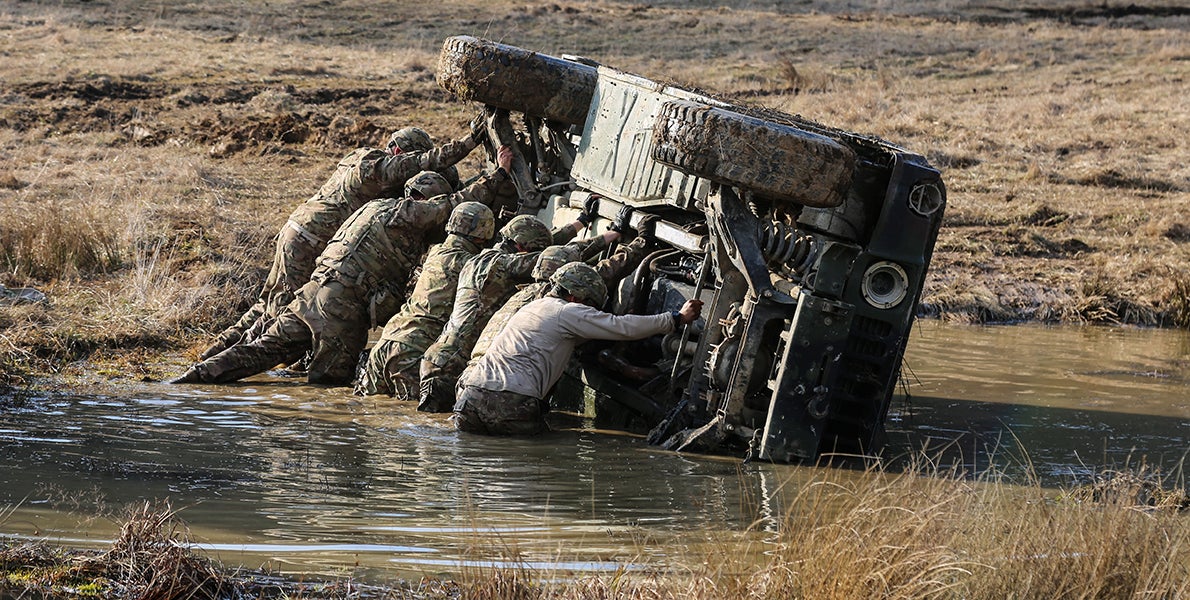Army Making Progress in Effort to Reduce Accidents
Army Making Progress in Effort to Reduce Accidents

Improving small-unit training and giving soldiers more predictable, mission-tailored schedules are just two ways the Army is working to reduce accidents across the force, Army Vice Chief of Staff Gen. Joseph Martin told a House subcommittee.
“We can never, ever stop our relentless efforts to get after mitigating the risks in our formations,” Martin told the House Armed Services readiness subcommittee during a March 23 hearing on preventing training mishaps. “What we do is very, very difficult. We ask our soldiers in our formations to do a lot.”
Realistic training is necessary to prepare soldiers for combat, but “it includes inherent risks,” Martin said as he testified alongside his counterparts from the other services.
“It’s our responsibility to create a safe work environment where our soldiers are able to learn, to grow and to achieve the results they need to,” Martin said, adding that the Army has seen a “significant reduction” in Class A accidents.
Class A accidents are the most serious, causing an injury or occupational illness that results in death or permanent total disability, or more than $2 million property or equipment damage.
In fiscal year 2020, Army aviation mishaps were at a 10-year low. On the ground, the Army’s on-duty tactical vehicle fatalities have averaged 11.8 a year since fiscal 2016, Martin said, the lowest five-year average since record-keeping began in 1972.
“That doesn’t mean we’re satisfied,” Martin said.
This fiscal year, the Army has lost 11 soldiers to Class A aviation mishaps and two soldiers to Class A tactical vehicle mishaps, he said. “That’s 13 soldiers who won’t be returning to their families,” he said. “This is completely unacceptable.”
Nearly all on-duty ground mishaps investigated by the Army Combat Readiness Center were due to human error, including speeding, not adhering to operator’s manuals, inadequate mission and crew rehearsals, failure to identify hazards such as water crossings or complex terrain, or insufficient pre-combat checks and inspections, Martin said.
However, “this does not mean we are placing the blame squarely on our soldiers and operators,” Martin said. “The leadership of the Army and the Army as an organization take full responsibility.”
Taking responsibility, Martin said, means acknowledging what may have indirectly contributed to the mishaps. This includes an “excessive operational tempo” that negatively affected home-station training programs, he said.
The Army also must thoroughly investigate each accident and ensure systems are in place to enforce training standards across the force.
“Our Army is a learning organization,” Martin said. “We conduct professional, in-depth investigations into each and every mishap. Our process gives us a good understanding of the why.”
To reduce accidents, the Army is emphasizing individual and crew-level training, Martin said. “In the past, we’ve paid for readiness at higher echelons by sacrificing lower echelon training proficiency to a degree, but we have since shifted our focus to ensuring that our organization, at every level, is highly trained, disciplined, and fit,” he said.
The Army also is planning to reduce soldier and unit operations tempo through its new Regionally Aligned Readiness and Modernization Model, also known as ReARMM.
The model is designed to provide more predictability and mission-focused training, Martin said, giving leaders more time to train their soldiers.
Leaders also have reduced demands on the Army’s combat aviation brigades by limiting how often those units participate in combat training center rotations. “Continuous rotations to the combat training center and the deployment requirements associated with them were reducing the individual and crew proficiency of our aviators,” he said.
Combat aviation brigades are now allowed to participate in no more than two rotations a year, giving them more time at home.
“Although we’ve seen progress, we will not rest until all of our soldiers return home safely to their families from their training,” Martin said.

